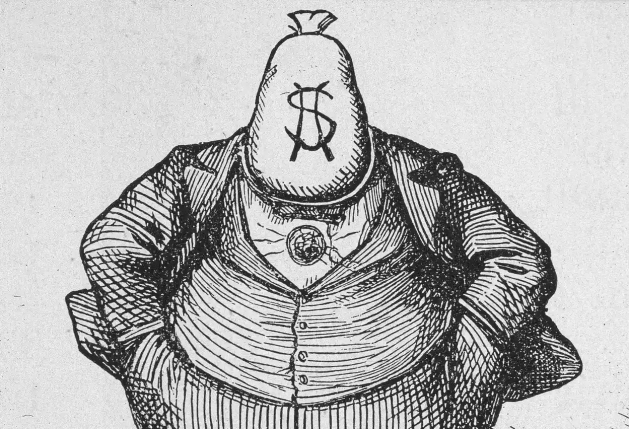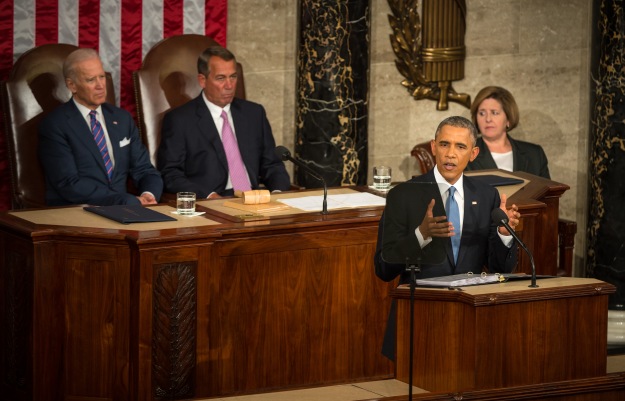But if the revolutionary gleam has worn off, blogging nevertheless is still a valuable tool for anyone practicing digital journalism, whether it be commentary, original reporting, photography, or video. I’ve been blogging since 2002 — on my own at first, then as the media columnist for the late, lamented Boston Phoenix, and since 2005 as the publisher and almost-sole author of Media Nation.
These days there are many places online where you can share your work — not just social platforms but also online publications such as the Huffington Post and Medium, which combine paid content with unpaid blog posts. (God help us, but such hybrids are known in some circles as “platishers.”) So why set up a solo blog?
The reason is that you need an online home that is controlled by you — not by Mark Zuckerberg or Arianna Huffington or some other digital mogul seeking to get rich from your content. Moreover, you need to establish an online identity. If you don’t, others will do it for you. “You can’t allow others to define who you are, or control the way you are perceived. This is especially true today for people in the public eye, but the more we do online the more it’ll be true for the rest of us, too,” writes Dan Gillmor in his book Mediactive. “To the extent that it’s possible to do so, you should control the reference point for people who want to know more about you and your ideas.” (In 2006 I profiled Gillmor for CommonWealth magazine.)

Dan Gillmor
Yes, I’ve uploaded this essay to Medium. I also occasionally self-publish at the Huffington Post and am a (too-) active member of Twitter and Facebook. But I’ll repost this article at Media Nation, as I do with all my work to which I have retained copyright. I don’t have complete control — I use the free blogging platform WordPress.com, and I must adhere to its policies. But I can back up my work and take it with me, and it would be easy to switch to self-hosting using free WordPress.org software if I felt the need. Just as important, the URL for Media Nation is my name: dankennedy.net.
So what is a blog? Taking the most expansive definition possible, a blog consists of content, usually text or mostly text, that is published online in reverse chronological order. That would include everything from the Washington Post’s breaking-news blog to Lisa Bonchek Adams’s diary-style blog about living with metastatic breast cancer. Dave Winer, an early Internet thinker and coder who writes the blog Scripting News, has a more specific definition, which he first gave voice to in 2003. Winer writes:
A blog is the unedited voice of a person.
The lack of editing is central, because it’s one person who’s responsible for every word. When you click the Publish button you should feel butterflies, at least sometimes, because there’s no one to pass the buck to. If someone else wrote the headline, or did a copy edit, or even reviewed what you wrote and critiqued it before it went out, it’s still writing, but it is not a blog.
I don’t believe we need to think about blogs quite that narrowly. For instance, if a journalist asks her editor to read a sensitive post before publishing, that doesn’t mean she’s not writing a blog. Still, there’s no question that a journalistic blog — which is what we are concerned about here — is different from other kinds of journalistic writing: less formal, more conversational, often with no traditional reporting (but never without research), and aimed at a small but passionate audience. (As David Weinberger and others have said, “In the future, everyone will be famous for 15 people.”)
How to write a good journalistic blog post
There are many ways that a journalist can go about writing a good blog post. It might be a sentence or two. It might be 500 words. But I think the essence of a worthwhile post can be boiled down to several elements:
- Call your audience’s attention to something it doesn’t know — for instance, an environmental blogger might write about a new study regarding electric cars. Above all, don’t be boring. The lede you write for a blog post might be different from what you would write for a news story, but you still need to grab the reader by the throat and not let go.
- Link to the source of your information, which could be a news article or possibly the study itself. Quote a bit from the source, keeping in mind that most of your readers won’t actually click. Shorter quotes can be put in quotation marks; longer quotes should be blockquoted. (Please note that I’m not talking about the sort of blog post that summarizes a news story so thoroughly that there is no incentive to click. I’m talking about a true value-added post. Keep reading and you’ll see what I mean.)
- Bring in other sources of information. Although there’s nothing wrong with a short one-source blog post, you add value when you pull in other sources, link to them, and attempt to make sense of them.
- Offer your own perspective and analysis so that your readers take away something of value that goes beyond the sources you’re quoting. If you are working for a news organization that does not normally allow you to express your opinion, then don’t. But a first-person conversational tone is appropriate. If expressing opinions is part of your job description, then have at it. In all cases, though, your tone and approach should remain journalistic. One good question to ask yourself: Is this something I would want to show a prospective employer?
Here is a blog post I wrote earlier this year about the sale of the Providence Journal that encompasses all of the elements I discuss above. Please note, though, that you could scroll through many pages of Media Nation and find only a few that are as thorough.
Some additional guidelines to keep in mind:

Ta-Nehesi Coates
Choose a beat that is narrow — but not too narrow. The best blogs are specialty sites where you can learn everything there is to know about a subject and where the blogger’s enthusiasm comes through. That is what you should aspire to. But if you pick too narrow a subject, you may find yourself hard-pressed to find enough reading material on which to feed. Boston restaurants? No problem. Ethiopian restaurants in Boston? Eh, probably not. You might make it through a week. But what are you going to do after that?
Compile a wide-ranging reading list. And keep compiling. If your blog is about climate change, you are going to want to put together a list of blogs, websites, and Twitter feeds related to that topic that you check every day. If your blog is a supplement to your regular work as a beat reporter, you might be doing what is sometimes called beat blogging — sharing short stories that might not be of general enough interest for your news organization, keeping on top of developments in your field, and interacting with your audience. (Steve Buttry offers some worthwhile thoughts about beat blogging; he has also written a good beginner’s guide to blogging.)
Maintain a conversation with the “former audience.” Dan Gillmor coined the phrase, and Jay Rosen has written about “the people formerly known as the audience.” They were referring to formerly passive news consumers who have been empowered by technology to talk back to us and among themselves. Your audience is a valuable resource. Tend to the comments on your blog. Always posts links to your blog posts on Facebook and Twitter, which is not only a good way to promote your work but is also where much of the online conversation has migrated in recent years. Remember the Dan Gillmor adage that your readers know more than you do — which is not to say that collectively they know more than you, but that someone in your audience might. Much of reporting consists of finding people who know more than we do and talking with them. Your blog (and your social-media presence) can make that easier.
Don’t try to read people’s minds. This is specialized advice, but since I write opinionated media criticism, it’s something I wrestle with from time to time. Another way of putting it is that you shouldn’t ascribe motives unless you’re willing to pick up the phone and do the reporting. For example, it’s fine to observe that the Boston Globe’s coverage of the Red Sox is soft (if you think that’s the case and can offer evidence) and that the Globe’s owner, John Henry, is also the principal owner of the Red Sox. But it’s out of bounds to speculate without interviewing the principals that Globe staff members are afraid of angering Henry, or that Henry must have sent out an edict of some sort. Facts are facts and opinions are opinions, and each has its place. Speculation is neither fact nor opinion and has no place in your blog.
Learn to use photos within the bounds of copyright law. I like to run photos with my blog posts, but I know I can’t run a photo that is the copyrighted property of, say, the Associated Press or the New York Times. Fortunately, there are troves of photos online that you can use without payment, many of them through Wikimedia Commons and Creative Commons. Be respectful of the photographer by crediting it as he or she would like and by linking to the photo. Here is an example of how I handle such credits. (You may be interested in this Q&A I did with the photographer, Gage Skidmore, for the Nieman Journalism Lab.)
Some bloggers worth paying attention to
The best way to become a good writer is to read as much good writing as you can. The best way to become a good blogger is to study blogs by people who know what they’re doing. Here are some examples from my own personal list and from my followers on Facebook and Twitter. You’ll find a range of approaches and topics here.
Note: This is just a tiny sample. I’ve left out many people, including friends, especially if they are white men writing about politics — the single most common type of blogger. If you’d like more recommendations, please take a look at the blogroll on Media Nation — and see who the people below are linking to.
Andrew Sullivan. A pioneering blogger and a former editor of The New Republic, Sullivan’s The Dish is a model in terms of linking, quoting, offering his own commentary, and posting with the regularity of a Stakhanovite. Sullivan writes most frequently about politics, but nothing is off limits. He is not on my daily must-read list, but strictly in terms of craft and discipline, he may be without peer.
Jay Rosen. The New York University journalism professor’s blog, PressThink, is perhaps the most influential in future-of-journalism conversations. Rosen writes a type of blog that I particularly admire — long, well-thought-out posts in which he attempts to make sense of many strands of information. His attention to comments is impeccable as well.
Adam Gaffin. The founder and editor of Universal Hub, which tracks and excerpts from several hundred blogs and websites in the Boston area, as well as from mainstream news sources. Updated multiple times a day, the emphasis is on the sources, not the writer — although Gaffin’s wicked sense of humor often breaks through. In 2008 I profiled him for CommonWealth magazine.
Ta-Nehisi Coates. A national correspondent at The Atlantic and an occasional columnist for the New York Times, Coates blogs powerfully and intelligently on issues related to race and culture. Beyond his blog, his essay “The Case for Reparations” may be the most important magazine article published so far in 2014.

Meg Heckman
Meg Heckman. A journalism professor at the University of New Hampshire whose blog, A site of her own, focuses on “women, tech, journalism.”
C.J. Chivers. A war correspondent for the New York Times, his blog is called The Gun.
Virginia Postrel. A libertarian and early blogger, Postrel writes the Dynamist Blog, which is worth a look.
Jim Romenesko. The original media blogger, Romenesko moved from blogging on his own to working for the Poynter Institute, and is now on his own once again at JimRomenesko.com. Essential news-biz gossip.
Ian Donnis and Scott MacKay. Their On Politics blog is a good example of a beat blog, as Donnis and MacKay cover politics for Rhode Island Public Radio.
Michael Marotta. His blog, Vanyaland, is a respected guide to alternative rock.
Marjorie Arons-Barron. Former editorial director at WCVB-TV (Channel 5), she writes a blog — often with political reporting — on politics and public affairs.
Mark Garfinkel. A staff photographer for the Boston Herald whose website, Picture Boston, is an excellent example of a local photojournalism blog.
Photo credits: Blogger (cc) by European Parliament; Dan Gillmor by Joi Ito; Ta-Nehesi Coates by David Shankbone; Meg Heckman by Dan Kennedy. All photos published under a Creative Commons license. Some rights reserved.











